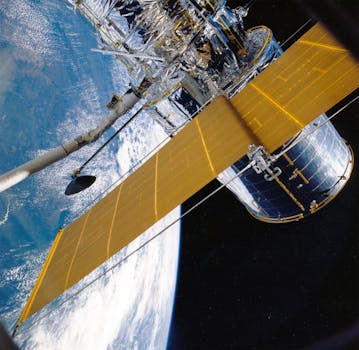
The Future of Satellites: Revolutionizing Global Connectivity and Exploration
Introduction to the Future of Satellites
The future of satellites is an exciting and rapidly evolving field, with significant advancements in technology and innovation. The focus keyword, Future of satellites, is at the forefront of this revolution, transforming the way we communicate, navigate, and explore space. With the increasing demand for global connectivity, satellites are playing a vital role in bridging the gap between remote and underserved communities.
The future of satellites holds immense potential, with the ability to provide high-speed internet, enable precise navigation, and facilitate scientific research. As technology continues to advance, we can expect to see significant improvements in satellite design, launch systems, and operational efficiency.
Advancements in Satellite Technology
One of the most significant advancements in satellite technology is the development of small satellites, also known as smalsats. These compact satellites are designed to be more cost-effective, efficient, and versatile, making them an attractive option for various applications. Smalsats are being used for a range of purposes, including Earth observation, communication, and scientific research.
Another significant development is the emergence of satellite constellations, which involve deploying multiple satellites in a coordinated manner to provide global coverage. Constellations such as SpaceX’s Starlink and Amazon’s Kuiper Systems are poised to revolutionize the satellite industry, offering high-speed internet and other services to remote and underserved communities.
Applications of Satellites in Various Industries
Satellites have a wide range of applications across various industries, including telecommunications, navigation, Earth observation, and scientific research. In the telecommunications sector, satellites are used to provide internet connectivity, enable mobile communications, and facilitate video transmissions.
In the navigation sector, satellites are used to provide precise location and timing information, enabling applications such as GPS, aviation, and maritime navigation. Earth observation satellites are used to monitor the environment, track weather patterns, and predict natural disasters. Scientific research satellites are used to study the Earth’s climate, explore the universe, and conduct space-based experiments.
Challenges and Opportunities in the Future of Satellites
Despite the significant advancements in satellite technology, there are several challenges that need to be addressed. One of the major concerns is the growing problem of space debris, which poses a significant risk to operational satellites and the environment. Another challenge is the need for sustainable and environmentally friendly launch systems, which can reduce the carbon footprint of satellite launches.
However, these challenges also present opportunities for innovation and growth. The development of sustainable launch systems, such as reusable rockets, can significantly reduce the cost and environmental impact of satellite launches. The implementation of debris removal technologies can help mitigate the risk of space debris and ensure the long-term sustainability of satellite operations.






